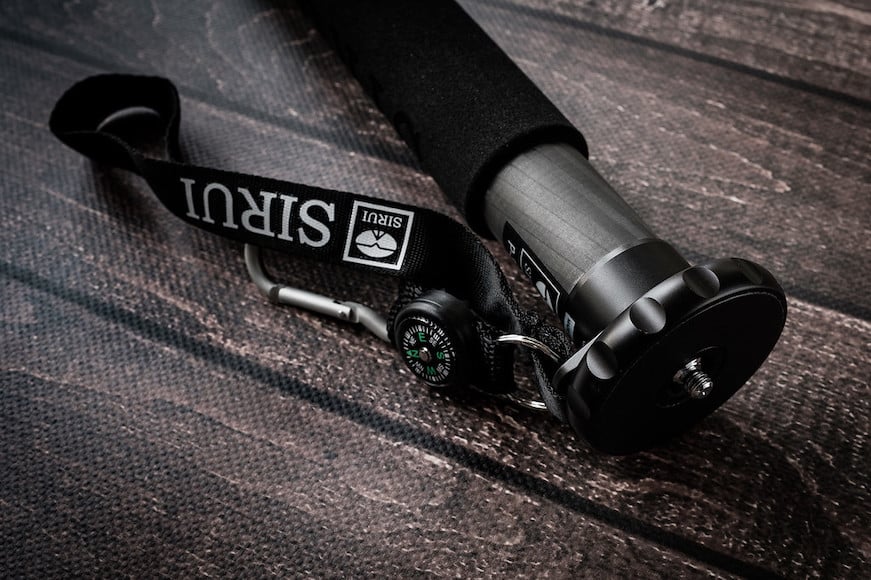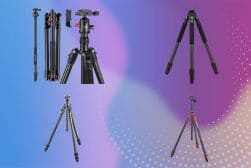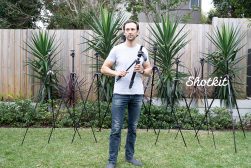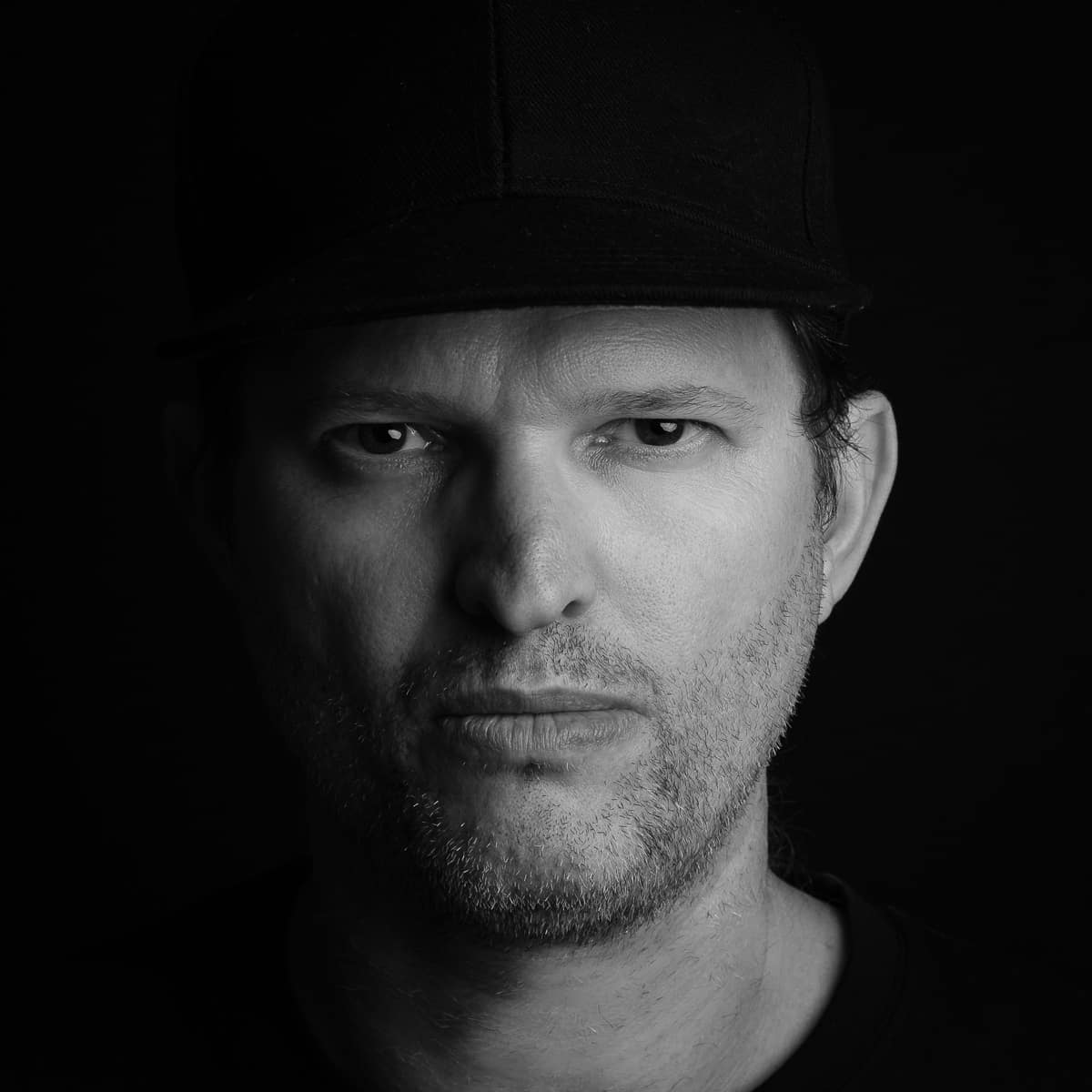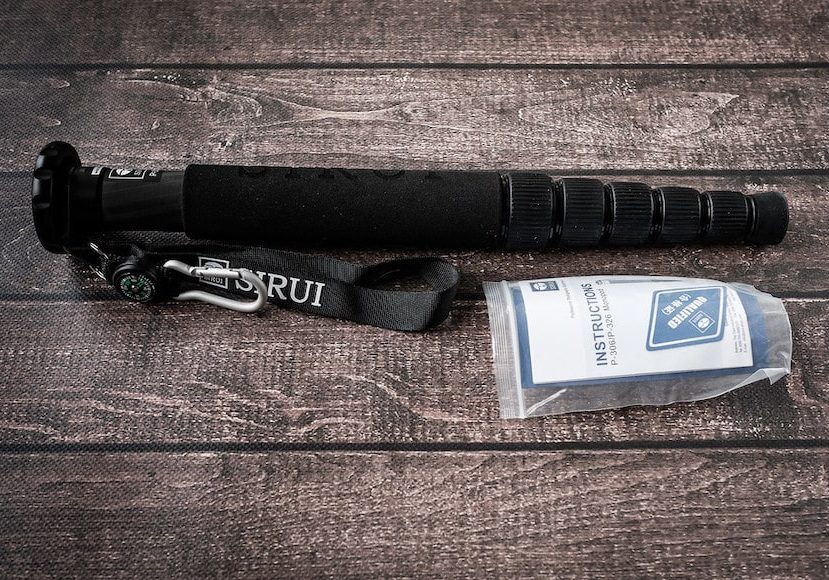
Sirui P-326 Monopod Review
For its price point, the Sirui P-326 monopod offers impressive build quality, light weight and functional design. Read more in our full review.
Sirui have made substantial inroads into the entry-level tripod and monopod market, built on their reputation for producing ultra-light weight, good quality products.
The Sirui P-326 monopod is one such product.
I don’t use tripods much, but monopods are handy when you’re shooting long lenses for extended periods (see how to use a monopod for more uses).
I frequently use a Sony 100-400mm f/4.5-5.6 GM, and although it isn’t massive, hand-holding it for three hours with a battery grip starts to take its toll.
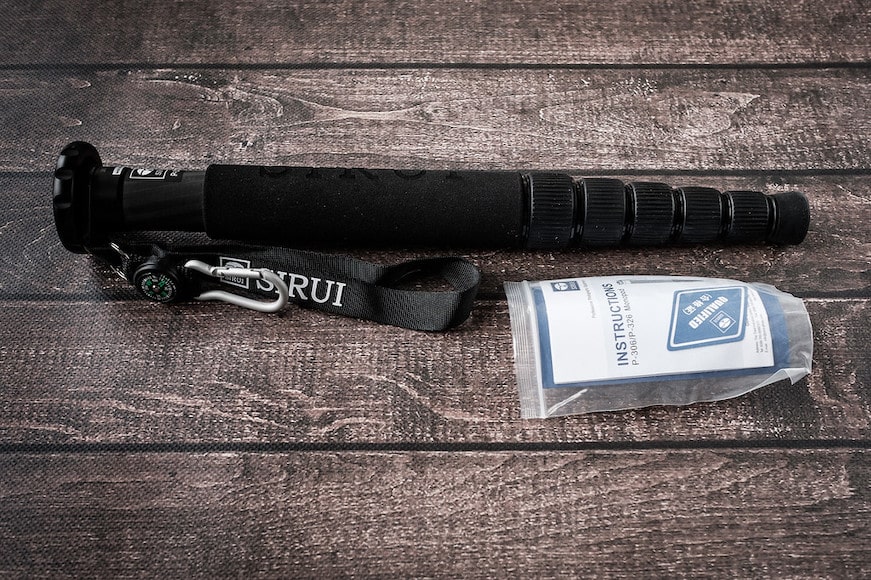
Comfortable to hold, durable and made from light-weight carbon fiber for a portable stabilizing solution.
Use code AFF5 to save 5%
Monopods help when I’m taking photos in 25-35 knot gusty crosswinds. It’s hard to keep stability with the lens blowing sideways in gusts.
I picked Sirui because I don’t expect my monopods to last very long when they’re getting trashed consistently in beach sand and saltwater. I decided on the Sirui P-326 because for me it was the best monopod on the market which combined light weight, good height and low cost.
I don’t have the time or patience to deal with a vigorous maintenance process for something that will spend its life in the sand.
I think my time spent cleaning could be worth more than the replacement value of the tripod if I had to go through a big cleaning process each time.
So let’s take a look at how the Sirui P-326 fared during real-world use and whether it rivals the other monopods out there in 2023.
Table of Contents
Sirui P-326 Monopod Specs
- Camera Mounting Screw: 1/4″-20 Male, 3/8″-16 Male
- Leg Lock Type: Twist Lock
- Leg Sections: 6
- Leg Diameter: 1.26″ / 32 mm (Maximum)
- Monopod Foot Features: Retractable, Spiked
- Load Capacity: 22 lb / 10 kg
- Maximum Working Height: 61.4″ / 156 cm
- Folded Length: 15.6″ / 39.5 cm
- Materials: Carbon Fiber
- Weight: 0.9 lb / 0.4 kg
Build Quality
Included with the Sirui P-326 monopod, you’ll find a wrist strap with carabiner and compass. I’m not 100% sure why a compass is there; I would assume anyone who is hiking to remote locations would take something a little better.
From a construction perspective, first and foremost, the quality of the carbon fibre body is impressive. Without that, we’re probably wasting our time on this review.
The wrist strap rotates around the monopod on a collar which has an annoying squeaky noise to it so I may consider removing it in future.
The lower cost of the monopod manifests itself in two areas: The strap seems a little cheaply made, along with the largely pointless compass.
Is it worth paying more just for a better strap and compass? Not from my perspective.
From a durability perspective, this monopod has outdone itself. I expected it to last a short period due to the abuse and lack of cleaning, but it’s still going strong 12 months later.
It’s showing almost no wear and tear, and all I’ve done to date is shake it off and brush the sand off.
Size & Handling
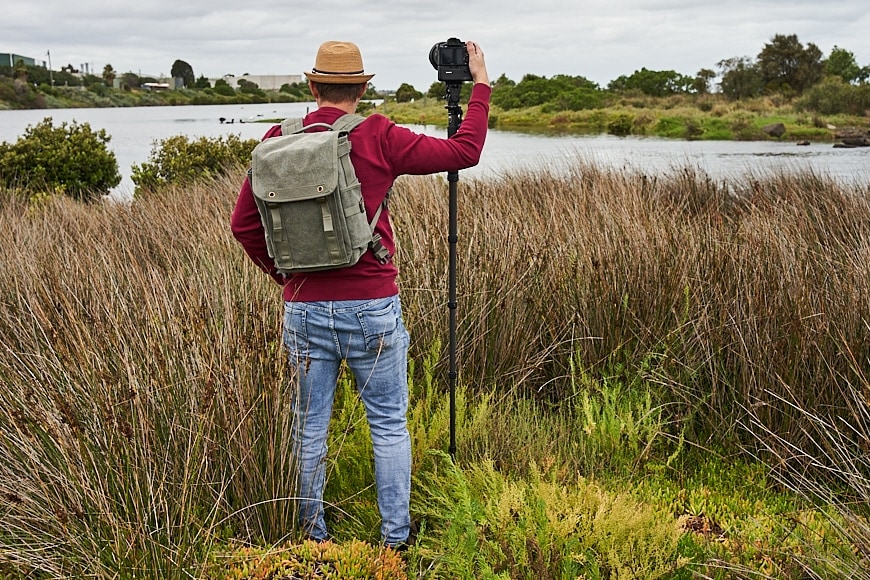
At 6’/183cm the Sirui P-326 monopod extends above my head with a Manfrotto tilt head. Without the tilt head it would still be tall enough for me.
The Sirui P-326 has a max height of 51.4″/156cm. At a standing height of 183cm/6′, this is perfect for me.
With the monopod fully extended with monopod-specific head, the camera is just above my eye level. In reality, I won’t be using it fully extended.
There are occasions where having a slightly longer monopod would be preferable; however, this height would make it suitable for the majority of users.
If you were carrying heavier lenses like a 400mm f/2.8 or 600mm, I would honestly recommend that you get something more substantial despite it being within the specification range.
With a weight of .45kgs or 450 grams, the Sirui P-326 is very light. It’s somewhere between the weight of a can of cool drink and a half litre bottle of water. That is amazingly light for a monopod that extends to 156cm.
Leg Locks & Joints
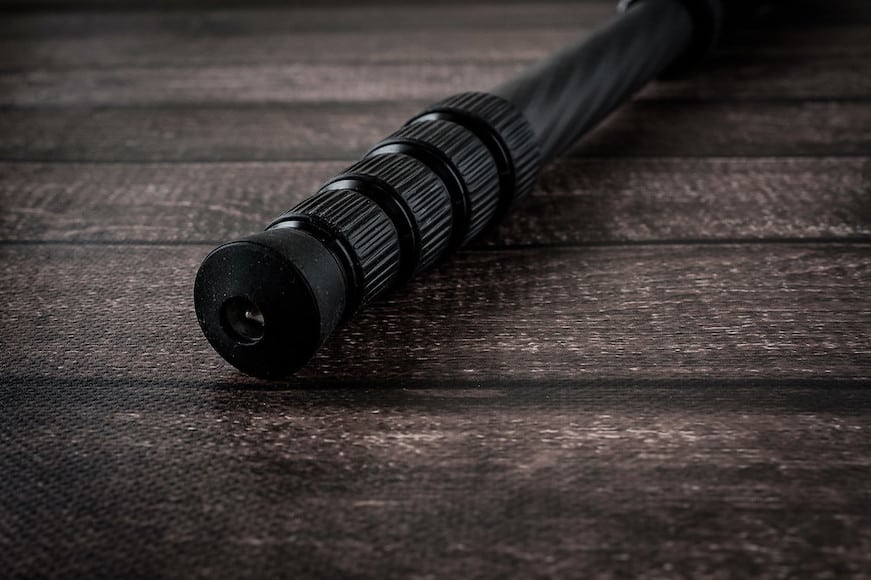
The feet of the Sirui P-326 have spikes built in that are retracted when not in use. Twist the foot to expose the spikes.
The Sirui P-326 monopod uses the twist-lock as opposed to the flip-lock leg design. I prefer the twist lock, but it’s a personal preference. Sirui seems to offer both twist and latch versions.
The twist locks have an excellent feel to them, locking without too much twisting required. For those who haven’t used them, when the monopod is fully compacted, untwist all at the same time by gripping them all and rotating them in one go.
This approach will allow you to expand the monopod quickly – the same works for the reverse, obviously when the legs are already compacted.
The one thing I do like is the spikes that come out of the legs. With many tripods, you have to replace the rubber feet and screw-in metal spikes.
In some cases, the metal spikes aren’t standard, and this is on far more expensive brands and models.
With Sirui, they have incorporated a twist mechanism that exposes the spike as you turn the foot. It’s a straightforward and practical idea that gives it one up on Gitzo.
The carabiner to attach to a bag is a nice touch. The little carabiner isn’t going to hold a camera, but this isn’t the purpose. It’s a clip to attach to a bag and keep it in place, and it meets these requirements.
The compass, well, yeah, I’m not going to go there.
Ball Head

While the Sirui P-326 comes without any head or quick release plate, these are available at a fairly low cost on the market.
The Sirui P-326 is not provided with a ball head or quick release plate so you will need to purchase one separately.
I prefer to have a tilt head for use with my monopod as this gives you more flexibility.
I mostly use the Manfrotto 234 Tilt-Head depending on the sort of weight I’m going to be carrying. My choice of the 234 over the 234RC is due to my use of Arca swiss plates.
If you get the RC version, you could end up paying extra for something you aren’t going to use. Use of the 234 will still require an Arca clamp, but these are available at a low cost.
Value for Money
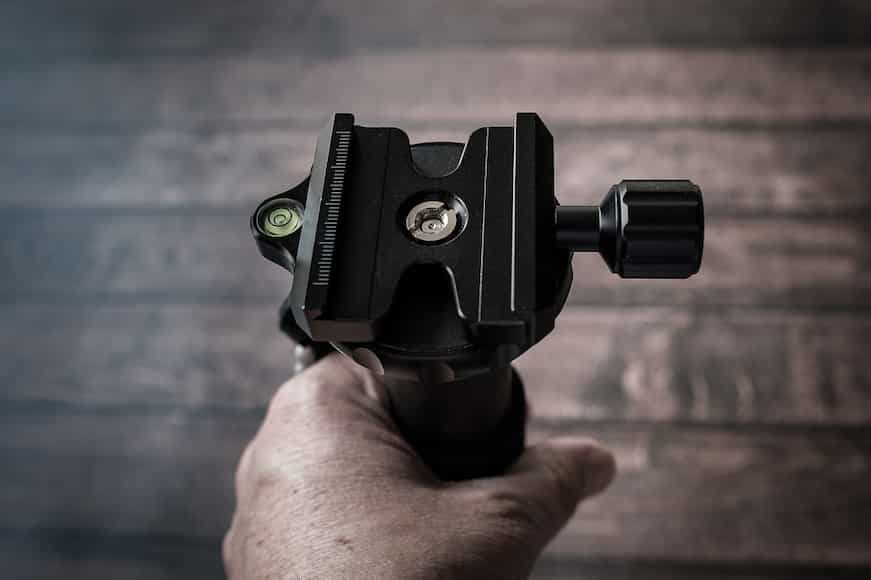
The Sirui P-326 retails for just under US$100 depending on where you purchase it, making it excellent value for money.
By comparison, you’ll pay more than double the price for the Gitzo GM 2562T Series 2 Traveller.
The Gitzo has a similar spec, although it’s slightly shorter and heavier, with the added benefit of holding a somewhat higher weight. The Gitzo is not provided with spikes so this would cost extra.
While the Gitzo is higher quality, I don’t believe it’s twice the quality to warrant double the price.
Sirui P-326 Monopod Review | Conclusion
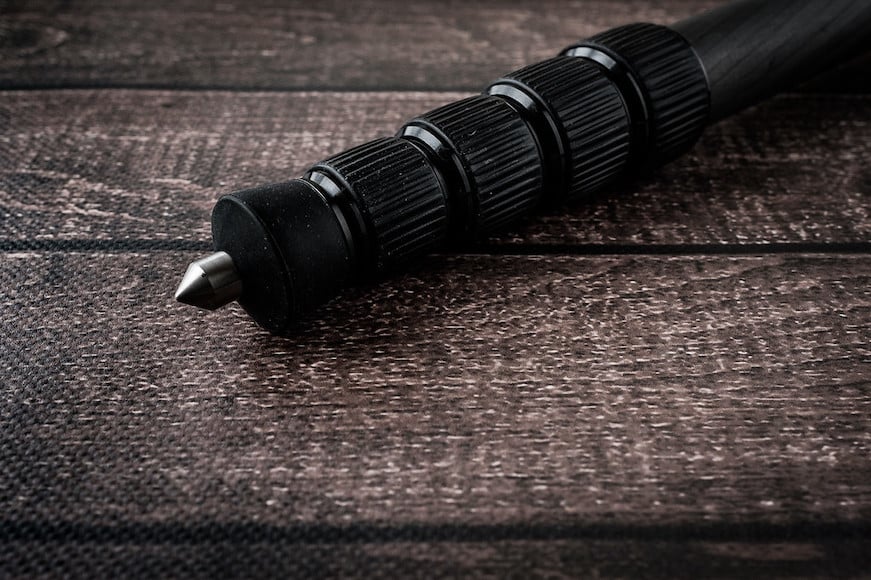
The feet on the Sirui P-326 with the spikes out. This is something brands like Gitzo should implement on their tripods and monopods.
At one point in time, “buy once and buy right” meant spending a fortune on photography gear. Now, the quality of lower end tripods and monopods has improved substantially.
Unless you’re pushing the limits with heavier equipment, I don’t think you need to worry about something more substantial.
Over the last ten years, we’ve seen a large number of excellent tripods and monopods join the market. Sirui joins these ranks with a set of monopods and tripods that should keep many users happy.
Like anything, the Sirui P-326 isn’t perfect, but it does provide a high level of quality. That’s what makes the price tag so appealing.

Comfortable to hold, durable and made from light-weight carbon fiber for a portable stabilizing solution.
Use code AFF5 to save 5%





